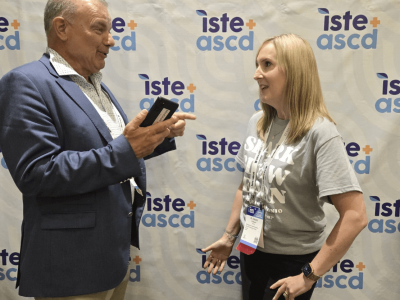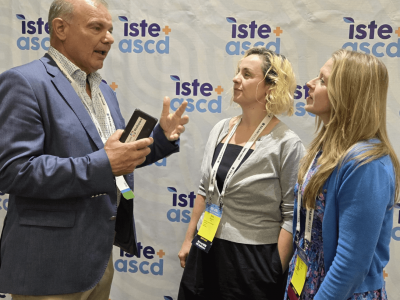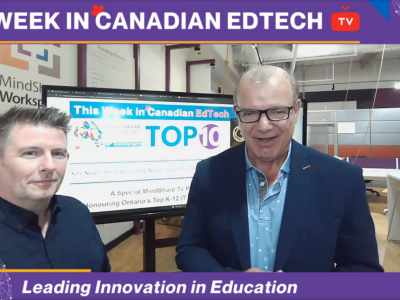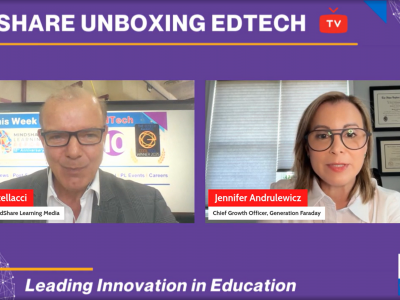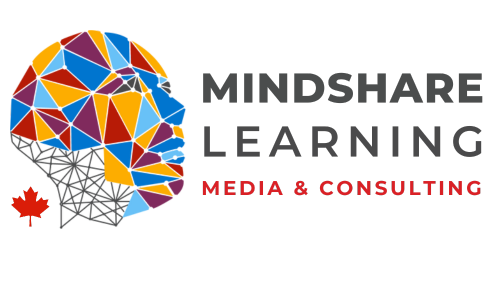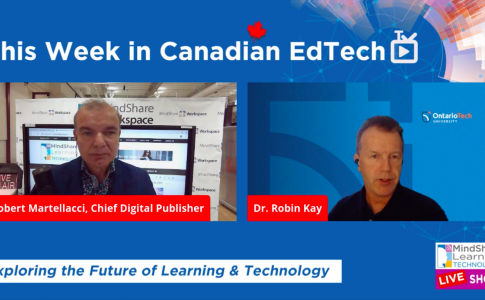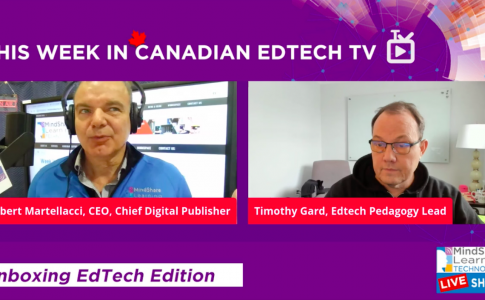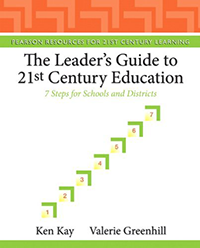 By Timothy Gard, Educator, Toronto District School Board | Twitter @MindShareK12
By Timothy Gard, Educator, Toronto District School Board | Twitter @MindShareK12
Over the past decade we have witnessed various incarnations of what 21st century education should like in practice, or at least what various organizations and theorists think it should look like. The evolution of thought over the decade has now produced some more mature, and I believe more cogent thought about what should be happening with regards to this topic, and perhaps more importantly, how leaders can move their districts and schools into this new age of teaching and learning. You cannot dismiss Ken Kay and Valerie Greenhill for their insights on this topic because they’ve lived it. Ken is a co-founder of Partnerships for 21st Century Skills (P21) and Valerie a former Director of Strategic Initiatives for the same organization, an organization that is now a decade old. They are well versed in the attempts, failures and successes of the 21st century movement and the requisite attempts at transforming our misaligned education systems into new, contemporary ones that create citizens ready to engage the brave new world that continues to change at break-neck speeds.
The book is an excellent resource in many different ways. Not only does the reader get a bird’s eye view of what has come before through the eyes of experience practitioners of 21st Century leadership but also numerous pragmatic documents, rubrics and insights on what needs to be done in order to move your school or district forward in the herculean task of transforming public education from the inside out. It’s not overstated if one referred to this kind of task as ‘the grand synergy’; a synergy guided by leaders with vision, character and passion for all that needs to take place to ensure that education systems of today are rightly empowered and focused on what needs to happen. It’s no easy task. Thankfully, the authors don’t suppose that it is and write accordingly.
This book is relatively short and so should be read by everyone and anyone even thinking about taking this grand adventure. There you have it. I said it before I even finished writing this review. Go and read it. No, you won’t agree with every little nuance of this overview, but you’ll come away better prepared to lead your school or district forward into the great change – the great transformation. In fact, as noted by the authors in a number of places, not every situation or context is the same and so not every piece of this work is necessarily applicable as they’ve related it.
The sub-title of this book talks about 7 steps. That’s not completely accurate because these 7 steps must be filtered through another ‘organizing principle’ called the 4Cs. Before I give a brief overview of the 7 steps let me talk about these 4Cs. The 4Cs are the 4 essential skills that will help drive a system-wide transformation. Interestingly, they are very much like the 6Cs that Michael Fullan outlined in his recent publication, Great to Excellent: Launching the Next Stage of Ontario’s Education Agenda. The exception obviously is that in Fullan’s overview he adds 2 other skills that, in my view, are necessary and would make a great addition to this work. These 4Cs are not surprising. They are re-counted and covered just about everywhere today in modern theories of education, sometimes clearly and other times not so clearly. The 4Cs are the most essential skills. There are of course other ones, and Kay even mentions that at one point in their Framework for 21st Century Learning work they identified 18 different skills. How does one even begin to implement 18 different skills? Well, you can’t, or at least you can’t with any modicum of success.
The 4Cs are critical thinking, communication, collaboration, and creativity. Compare them with Fullan’s wheel of 6Cs where he lists them this way under the heading, Student, Society Well-Being (in order from 1 to 6): character education, citizenship, communication, critical thinking & problem solving, collaboration and creativity & imagination. The 4Cs are the sine qua non of all skills. They are the skills that are the key filters, if you like, for moving forward because without them and without a clear way to evaluate them – something that they hope to do over time – then the system gets entangled in the less important and the trees of this forest are missed. Educators around the world would agree that these skills are the essential ones. I would however agree that Fullan’s 6Cs are fuller and perhaps more mature. That could be argued of course but as I continue to move in the circles of this society I am convinced that character education and citizenship are also definite building blocks. But are they skills? Something to write about another time.
The 7 steps that Kay and Greenhill delineate are from beginning to end: Adopt Your Vision; Create a Community Consensus; Align Your System; Build Professional Capacity; Focus Your Curriculum and Assessment; Support Your Teachers; and Improve and Innovate. As I read through the various chapters on each of the above steps I was in agreement many times with what the authors referenced and the way they presented the material. The steps are not new; you can find these steps in various incarnations in systems of change and in the business world as well. The authors however give the steps context in education. You can read about various districts in the US where they have attempted to work out and work through these steps and you can gather the wisdom from education leaders who have made every attempt to implement these steps.
The first 2 steps are meant as contextual. By this I mean that each district or school will create their own vision and develop their own community consensus because their own context is unique to them. Your own adoption of this model for creating a 21st Century model of education will be unique because no two contexts are the same. Goodness knows that the time is ripe for developing a fresh vision in education. If you’re currently working in a school or district you know how difficult it is to move forward without developing a vision and to build consensus around that vision. And I think that for districts implementing these steps they’re going to have to de-centralize the way this vision is worked out so that individual schools can take ownership and create consensus in a way that makes sense for them. The old winds of change in education belie the old adage – there’s nothing new in this movement or change, or why should I change something when it’s coming from the top down? Teachers are tired of being told how to be visionaries because they need to be empowered by a different kind of leadership; a leadership that is often spoken about but rarely practiced, at least in real terms and in real ways. It’s called servant leadership. If you want to create a vision, be a visionary who lives with your feet on the ground, and perhaps more succinctly, with your feet on the ground next to the practitioners.
The authors believe that to create vision we must be aware of the change going on around us. Ipso facto, the world is changing and changing quickly. How do we develop a vision that embraces a 21st Century education for a 21st century world? How do you want to work out the necessary imperative – change or become irrelevant? I like that the authors also believe that the 4Cs should also be worked out at the leadership level and by the implementers of said change. How true! How often do we live what we teach, and preach? Your vision should also include ways in which your leadership team and teachers practice critical thinking, communication, collaboration and creativity at the highest levels.
Building and creating community consensus is a difficult task. It builds on the first step – which I’ve already touched on – in that if you want to take your vision to the next step you need to ensure that your team is stepping with you. This doesn’t mean that you coerce your team to follow your vision. Community by definition means that there is common ownership. It doesn’t mean you always agree on everything but it does mean that you work together to work out the vision for the greater community, and in this case it means the students who are dependent on a powerful and relevant 21st century education. Again, the authors do not simply talk about this step. They provide you with examples and even resources to help your build consensus right across the broader community – students, business leaders, and community groups included.
The 3rd step is something that Ontario has been working on for a great long while, or so it seems. Kay and Greenhill believe that aligning your system is a necessary corollary from the first 2 steps. In fact, they argue that if you get the first 2 steps right you may very well realize that your system is terribly misaligned. And in order to find out how misaligned – or aligned, to be more positive – your system is you should take stock, so to speak. They reference a tool that called the MILE Guide which is freely available for download. They spend some time talking about how to use this tool to help schools and districts assess where their system is and how to develop an alignment strategy in order to move forward. The tool in itself is a powerful resource and well worth reading through and gathering the wisdom from work that has and is going on even now in various districts and schools around the US. Moreover, the MILE resource includes links to other resources that are worth perusing as well.
Fullan would argue that professional capacity is the capstone of Ontario’s renewed vision over the last 8 years. And further Ontario is now ready to incorporate new and innovative ways to further enhance our educational system so that it matures into excellence. One could argue with some of this hubris. I’m not sure that it’s as deep as he would suppose. Again, another piece of writing for another time. The 4th step talks about developing professional capacity around the 4Cs. As mentioned, we cannot even begin to talk about the 4Cs if our teachers are not modeling them all of the time. And how do we build this capacity? The authors believe that all of our professional development must be developed using the 4Cs as a filter for the ‘what’ and ‘how’ we present to our educators.
It still amazes me that we still offer PD that is delivered through a lecture format that does not engage the audience in any sort of critical thinking, does not include a collaborative component that ensures educators create (creativity) something that they can take back to their classrooms that is useable and practical to their particular context, and that the communication is simply one way. I refuse to attend these kinds of PD sessions and I know how ineffective they are because I used to deliver them that way! We know that professional learning communities are perhaps the most powerful way to build professional capacity and if you build a PLC around the 4Cs then you can well imagine how much more cogently professional capacity will develop. Gone are the days where we use program leaders to direct schools in which there is no connection, or at least, very little buy-in because collaboration and communication is shallow at best.
The 5th step of Kay and Greenhill’s plan centres on curriculum and assessment. And this is no easy task for a number of reasons. Moving into a new way of teaching and learning means we need to re-focus our curriculum and assessment. It’s time for an innovative approach the author’s argue and this supports Fullan’s view as well. If you’ve developed professional capacity then logically I think we can assume that there will be a new way of looking at the material we are presenting and the way we assess the understanding of this material. How do we assess the 4Cs that makes sense to both teacher and learner, and to the other stakeholders in education? Does our current curriculum support the 4Cs in clear ways? Are we able to re-think and re-design our current curriculum so that we can easily – or more easily – see the outcomes in student performance tasks?
Of the 4Cs Kay and Greenhill maintain that critical thinking is the most vital. And through their work with various districts this has been supported and justified by educators. Therefore, since this particular skill is vital we must focus our efforts on developing curriculum and assessment that teaches and measures this skill with accuracy. Kay and Greenhill state that to integrate the 4Cs in curricula means that they are present in ‘intended and written curricula’, in taught curricula and in assessed curricula. They mention Wiggins and McTighe’s Understanding by Design as a model approach to this kind of curricula design. There is a great bit of detail in this chapter on curriculum and assessment and it is very much worth a thorough read; I cannot do justice to the content in this short review.
Kay and Greenhill focus on supporting teachers in the 6th step of the 7 step process for creating a new model of education. No researcher or theorist of any merit would downplay the importance of teachers for making this whole process work. They are the ‘lynchpin’ so to speak; without their commitment to this process and the support of teachers by system leaders then it is all for naught. It’s also important that leaders are clear about what kind of support teachers are going to need. Does the learning community embrace effective professional learning communities? Are educators able to meet and deconstruct the work that’s being done in this new way of doing education? What are the barriers for making this happen? Do teachers feel that they can innovate and experiment with freedom? Are teachers being able to collaborate with their colleagues in a safe environment where failure is treated as it should be – a step forward, not a step backward? I do believe that if you can motivate your teachers to take risks with a fully supportive environment both at the peer and administrative levels you will create a powerful framework of trust and cooperation. The authors also provide some great overviews with further reading suggestions on student work in the 4Cs and also different pedagogies for supporting the development of the 4Cs. Again, this is a pragmatic work and their efforts to provide a number of usable resources supports their approach.
In any sort of change environment, regardless of context, you must reflect back over where you’ve been and what you’ve accomplished, and where you’ve stumbled. Improving and innovating are necessary if you’re going to create lasting, impactful change over time. As a district or school can you reflect over the work you’ve done with a look to going back and improving and tweaking your work to make it even better? You cannot ever rest on your laurels, if that’s even possible given the nature of this kind of work. There must be a culture of continuous improvement so that the 4Cs are ‘embedded into teaching, learning, and the operation of your school or district’. The authors give examples of how you might create this culture of continuous improvement and they reference resources and other literature that help to clarify this philosophy as well as support in practical ways how a school or district can develop and refine this mindset.
The appendices of this work are valuable. They’re valuable because the authors have compiled definitions, skill maps, and various resource documents to support the journey of working through the 7 steps with the 4Cs in mind. And there are many examples of districts using these steps and a quick ‘look in’ on how they’re doing with this transformational design.
I’ve only scratched the surface of what this book has to offer. In my opinion, as stated early on in this review, it’s a work that must be read by all leaders in today’s education communities. It’s realistic and yet open enough for districts and schools to experiment with their own flavours of how 21st century will be rolled out in their unique contexts. Moreover, as mentioned, it offers tried and true examples of how to go about creating a system of education that prepares our students for a world that will be ever more fluid, challenging and exciting. This will not happen without clear guidelines. I think this work is worth using to stimulate further thought, if not a tried and true guide to begin the journey forward.
